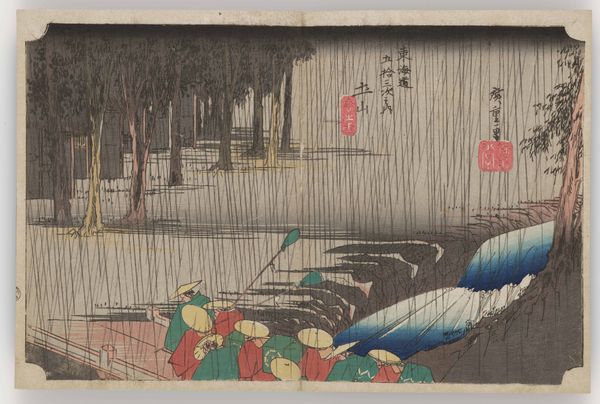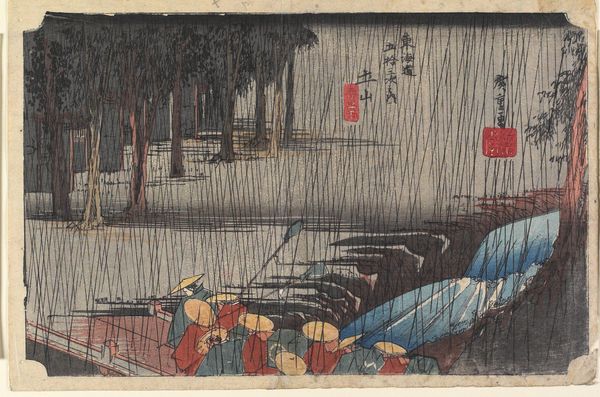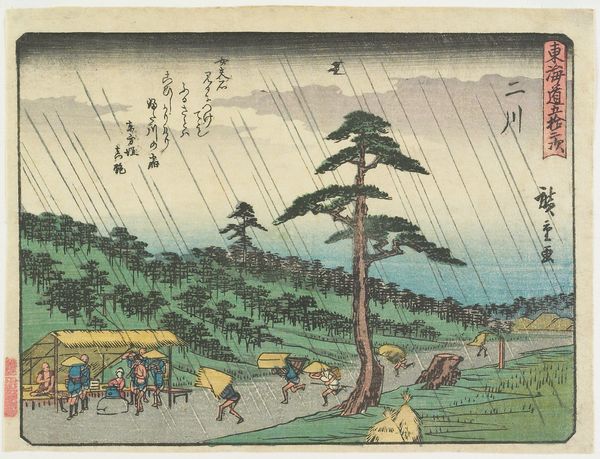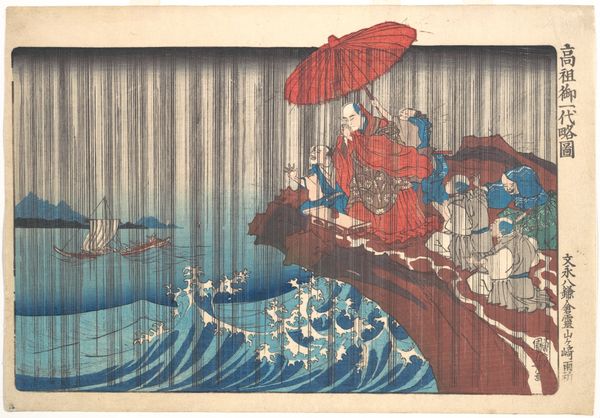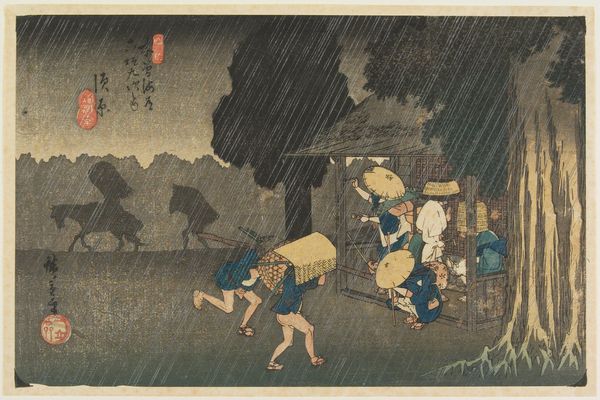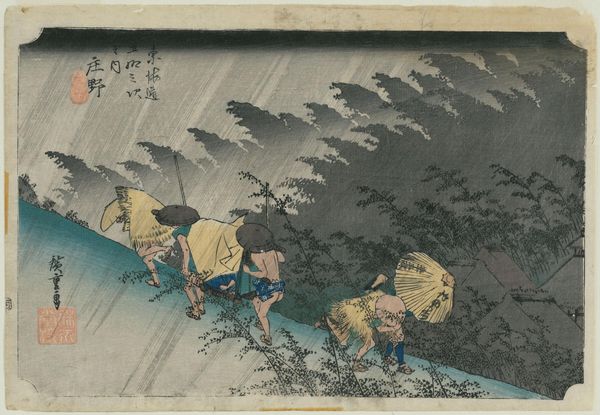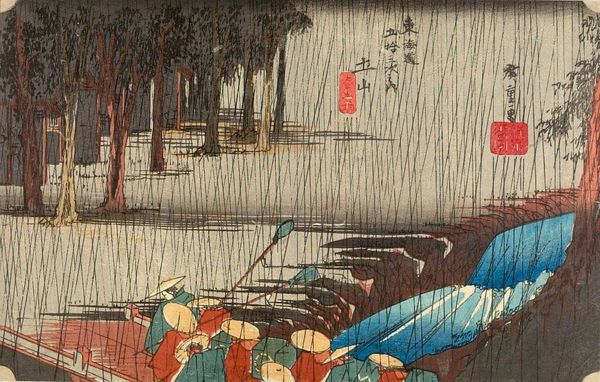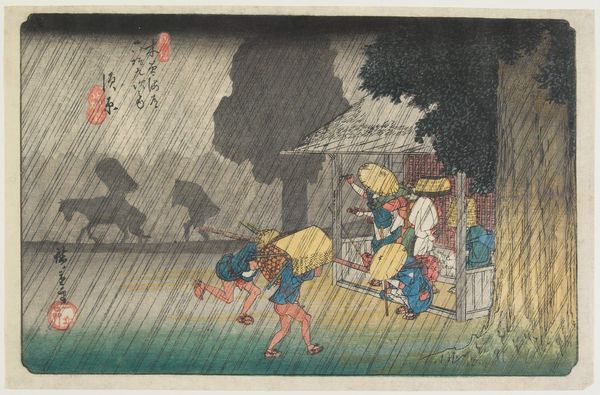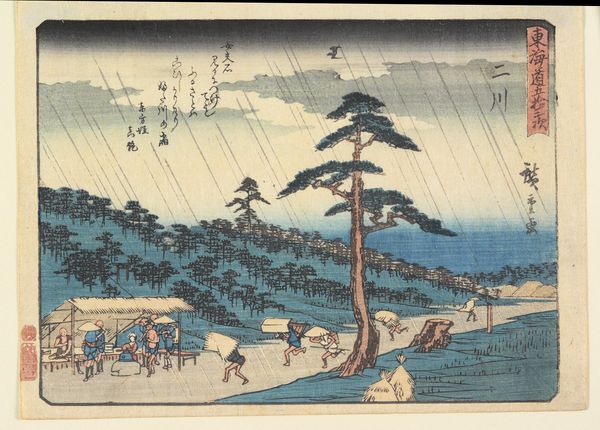
Dimensions: 9 1/2 × 14 9/16 in. (24.2 × 37 cm) (sheet, horizontal ōban)
Copyright: Public Domain
Curator: What a somber, evocative scene. The artist masterfully uses line and color to capture the heavy rainfall. Editor: Yes, it's all encompassing, almost suffocating. I wonder about the economic implications of the weather depicted. Is the journey these travelers are undertaking essential, regardless of the downpour? Curator: Precisely. This woodblock print, titled "Tsuchiyama," by Utagawa Hiroshige, dates back to around 1832-1833 and is currently held at the Minneapolis Institute of Art. Hiroshige, as you know, was a master of the Ukiyo-e style, particularly landscape prints. Here we are looking at ink and color on paper. Editor: Looking closer at these huddled figures, you immediately sense the labor involved in the production of prints like this. Who were the artisans? How were they compensated for carving these woodblocks? Curator: Indeed. The success of prints like this involved complex collaborations, often unrecognized in art-historical circles. However, I find that the composition relies upon contrasting diagonal lines. Observe how the angle of the bridge in the lower foreground meets the incessant rain sweeping from the sky at its peak to draw the eye deeper into the work. Editor: A very astute observation; it's all angles. The umbrellas themselves create such geometric patterns; an exercise in artful visual engineering of negative space! Still, what about the paper itself? Sourced locally, most likely, its relative cheapness speaks to the accessibility of such works to the wider public. These images were designed for mass circulation. Curator: Correct, the use of woodblock printing techniques allowed for mass production and distribution, placing artworks like this into homes and businesses that likely wouldn't own one-of-a-kind originals. Furthermore, in relation to what we see depicted, one could say it reveals the social infrastructure that developed along Japan's roadways. We may think little of bridges, but they greatly enabled and mediated trade, resource distribution, and general communication during this era. Editor: Indeed. Looking at this artwork, the context is as important as the construction. It makes one consider labor and consumption together to better appreciate its inherent value and lasting impact on us today. Curator: And for me, it reinforces the impact and harmony that color and carefully considered form contribute to generating feelings of introspection and the sense of perspective of life's daily journeys.
Comments
No comments
Be the first to comment and join the conversation on the ultimate creative platform.

